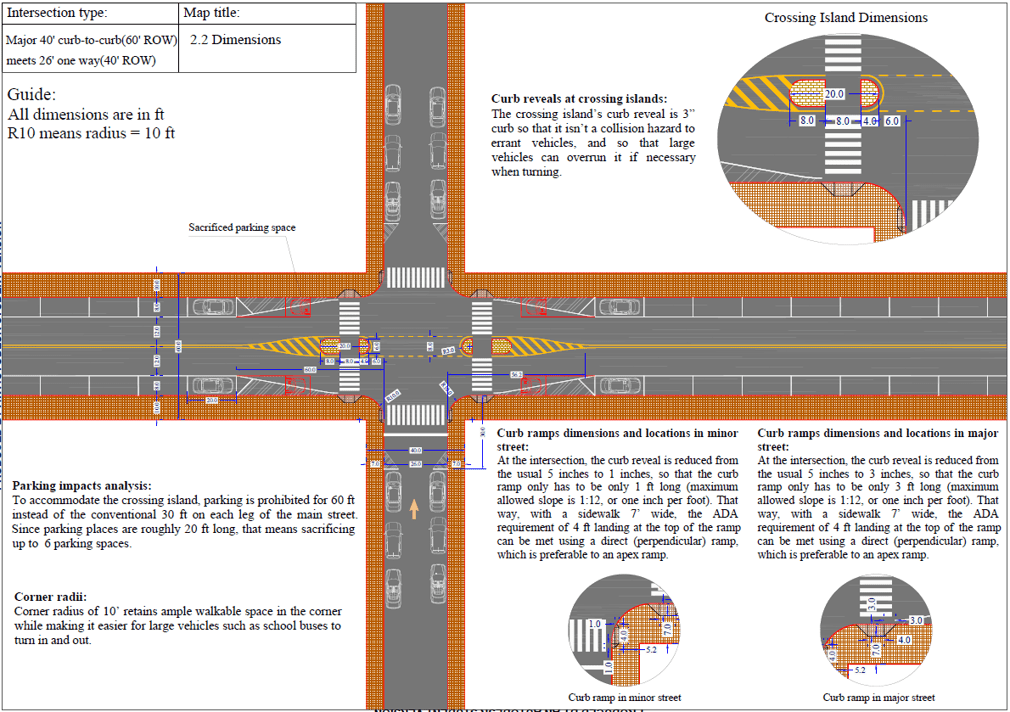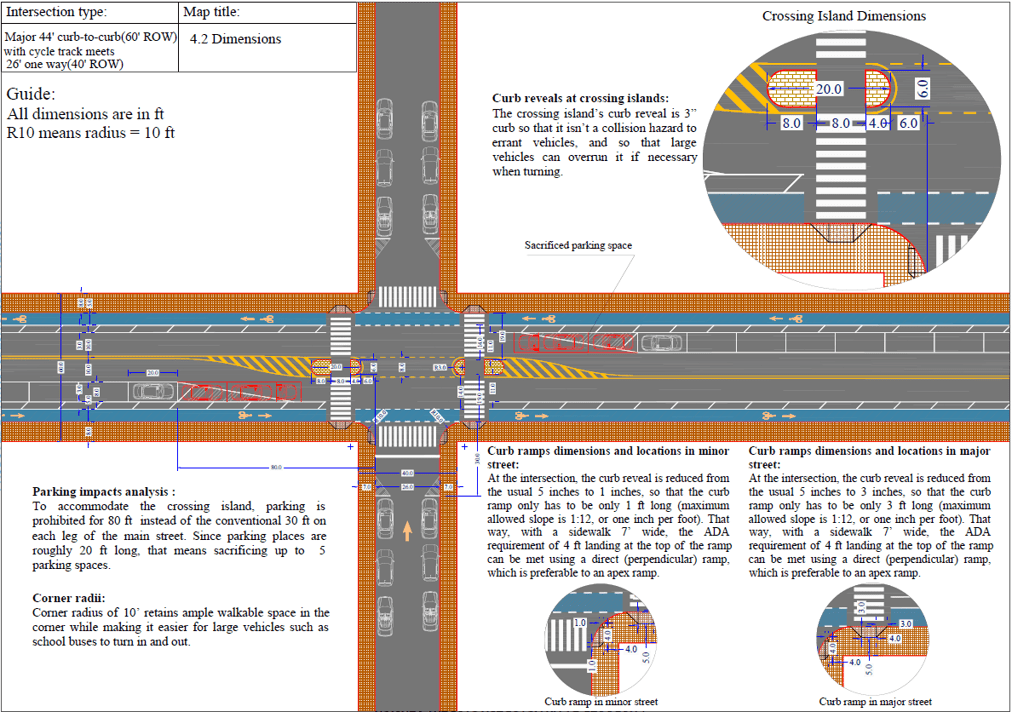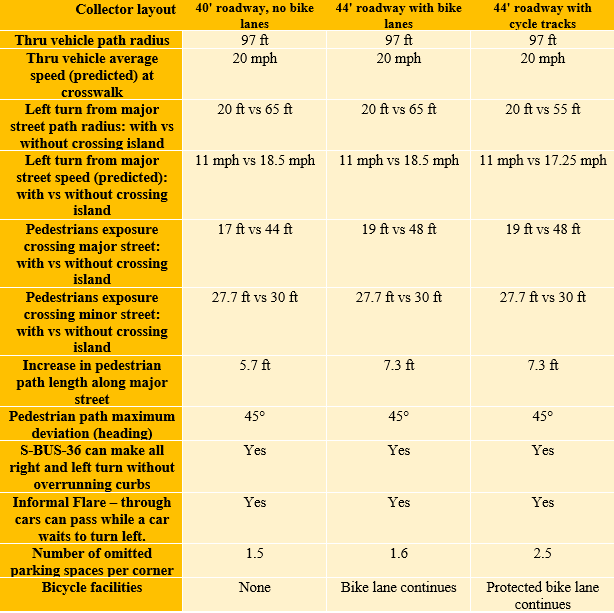by Peter G. Furth and Milad Tahmasebi
At unsignalized intersections, crossing islands make it so much safer and easier for pedestrians to cross the street. They can also deliver many other benefits, including slowing through traffic, slowing turning traffic, and reducing pedestrian exposure, especially on 2-lane collectors and minor arterials where a crossing island creates horizontal deflection. Nevertheless, traditional practice in the US (unlike in Europe) rarely uses crossing islands on 2-lane roads. (Here’s a welcome exception, in Cambridge, MA, and a blog post about it.) Road designers are concerned — will large vehicles such as school buses and firetrucks be able to turn? Will a left-turning car block the intersection? Will there still be room for the bike lane? How much parking will have to be removed?
To answer these questions, we made designs for hypothetical intersections of a 2-lane collector and a local street, testing three layouts for the minor arterial. Here are the designs, all calibrated to have just the right deflection to slow through traffic to 20 mph:
40 ft wide, parking on both sides:
44 ft wide, parking on both sides, conventional bike lanes
44 ft wide, parking on one side, protected bike lanes
For each design, we did a geometric analysis using turning templates to ensure that large vehicles can turn, to measure the radius (and hence, speed) of cars turning left onto the local street, etc. Here are the drawings for that geometric analysis.
Conclusion: In all cases, large vehicles can turn, cars can turn left without blocking through traffic, and bike facilities continue without interruption. Vehicle speeds are reduced for both through traffic and left-turning traffic, and pedestrian exposure declines. The following table summarizes the performance of these designs.
This research was supported by the Helen and William Mazer Foundation, and has been reported in a paper scheduled to be published by Transportation Research Record.




